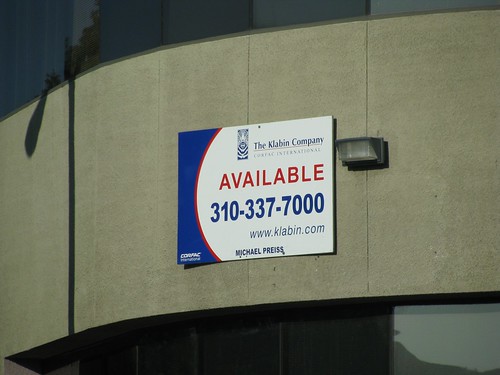
It hasn’t been quite a month since we unveiled our insanely bold move to form an independent brokerage. We took the plunge for a variety of reasons, but at the core of each was the idea that the familiar big brokerage models are mired in tradition, tradition that often forgets their very raison d’etre - the customer.
In the past, I have written about my suspicions that the big brokerage models are at risk. This week we are seeing some tangible evidence. We continue to watch the larger companies close or downsize offices and implement other cost cutting measures in response to our slower market, in an effort to return to profitability and, in some cases, to survive. Troubles continue for Realogy, owner of some household-name brands including Coldwell Banker, C-21, ERA and Sotheby’s International. As reported by Urban Diggs’ Noah Rosenblatt:
Last week, the firm warned that it’s at risk of violating the terms of its bank loans and is trying to swap $1.1 billion of bonds for new debt at a discount… A default does not necessarily mean the end of a company. Traditionally, many companies in default have been able to negotiate new debt terms with their creditors. But with so many defaults looming, experts warn that fewer companies will be able to restructure their debt. As a result more of troubled firms could wind up in bankruptcy court and being liquidated.”
And, I love his explanation of the traditional brokerage model accompanied by a photo of a veloca raptor. (At least, I think it is a “veloca” raptor; All raptors kind of look the same.)
A real but dirty way to look at this model from the employing brokerage standpoint is that you have ‘X’ rats running around the city, bringing cheese back to the home base! Yes, that means I called myself a rat! The analogy is accurate though. The more agents you have running around bringing cheese back to the home base, the more potential profits the firm can make. Ideally, you try to hire the most ‘connected’, ‘educated’, and ‘networked’ agents possible; but of course this does not always happen in a low barrier to entry business. In a market with declining sales volume and prices, this model becomes VERY pressured. I expect the # of agents who work solely on commission as their full time job to shrink drastically over the next few years. The strong will survive, the weak will die out and look for new jobs. It’s an inevitable side effect to a market experiencing less total sales volume and declining prices. Which begs the question, will a new model emerge?
I think “new” models are emerging, but I don’t think they are the models Noah was talking about. In San Diego, I have watched for some time the old idea of “market share” vaporize. None of the Big Boys seem to dominate my core market areas any longer. Instead, the MLS reads like a “Who’s Who” of “Who’s That?” Today, small, independent brokerages and brokers collectively hold the market share title. And it is a trend which I believe is here to stay.
Steve and I had the epiphany long ago; it just took us awhile to act on it. Buyers and sellers hire agents, not companies. Big images and big names used to mean something, but the Internet has changed all of that. Today, the brokerage on steroids can not give me, and consequently my selling clients, any more exposure than I can accomplish on my own. In fact, I can accomplish much more once untethered. Buyers are no longer impressed by the expensive offices and trappings. This unnecessary plumage which once symbolized strength and instilled trust is more often seen as extravagant excess (think “investment banks”). Our customers don’t want to feel like a number in a bottom line; they want to feel like people who will be cared about and treated fairly.
As a point of clarification, it is not really a matter of size. Small can simply be a miniature version of big. It is about the ideal of creating a model in which the individual agents are not seen as profit centers but as partners in delivering a higher level of service and of bringing a higher standard of integrity, ethics and competence to the customer to the benefit of all agents in the organization. Of course, my vision only works if the broker owner is a working broker, one whose intent is to make a living and a career representing clients and not simply from the efforts of those who do. If there is another way to avoid the “rats bringing home the cheese syndrome,” which can only result in recruitment and critical agent mass being the priority, I am not seeing it yet.
Seth Godin, marketing genius extraordinaire, says this of the bloated corporate image:
It’s organized waste. Profligate spending designed to communicate confidence and just a bit of hubris… I’d replace the expensive sponsorships and buildings with something more valuable, quicker to market and far more efficient: people. Real people, trustworthy people, honest people… people who take their time, look you in the eye, answer the phone and keep their promises.
That was precisely the idea behind our madness. So far, this way, our way is a good fit.

photo credit: TheTruthAbout…

